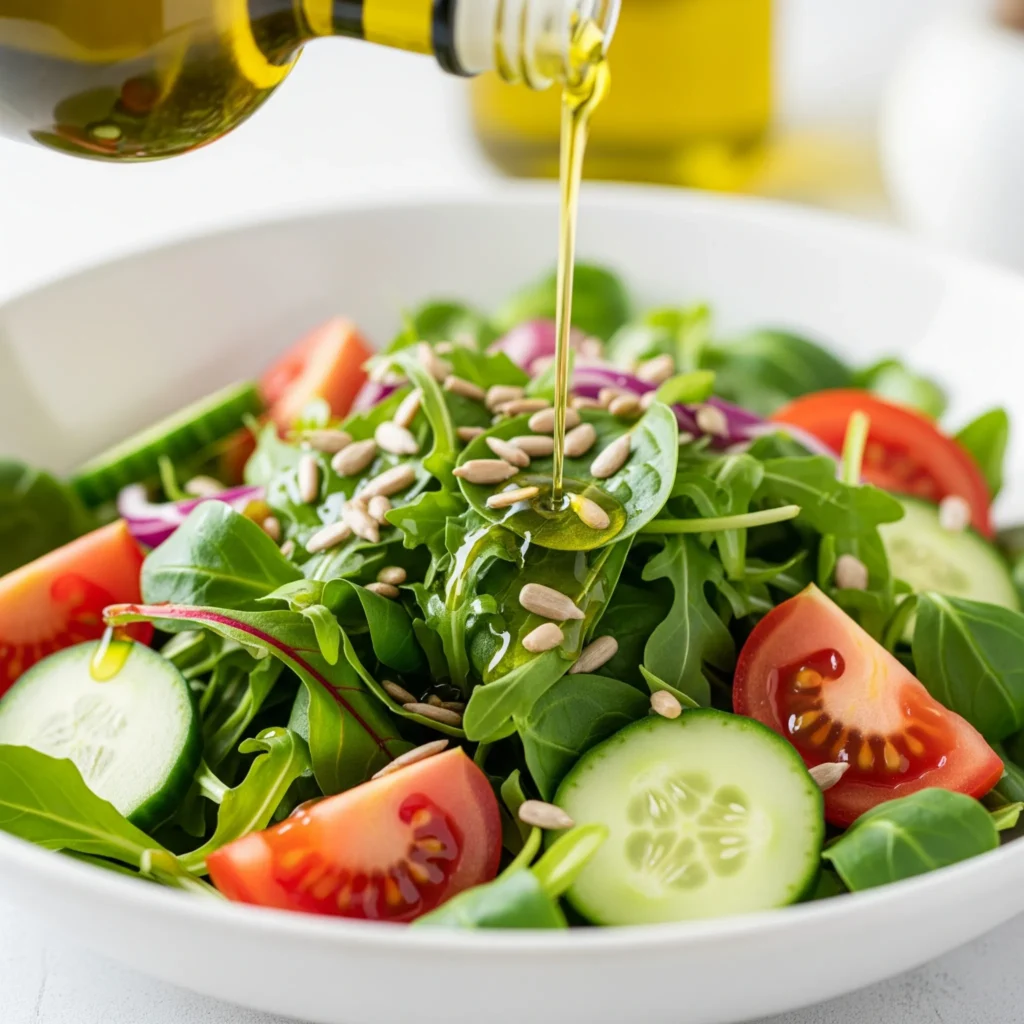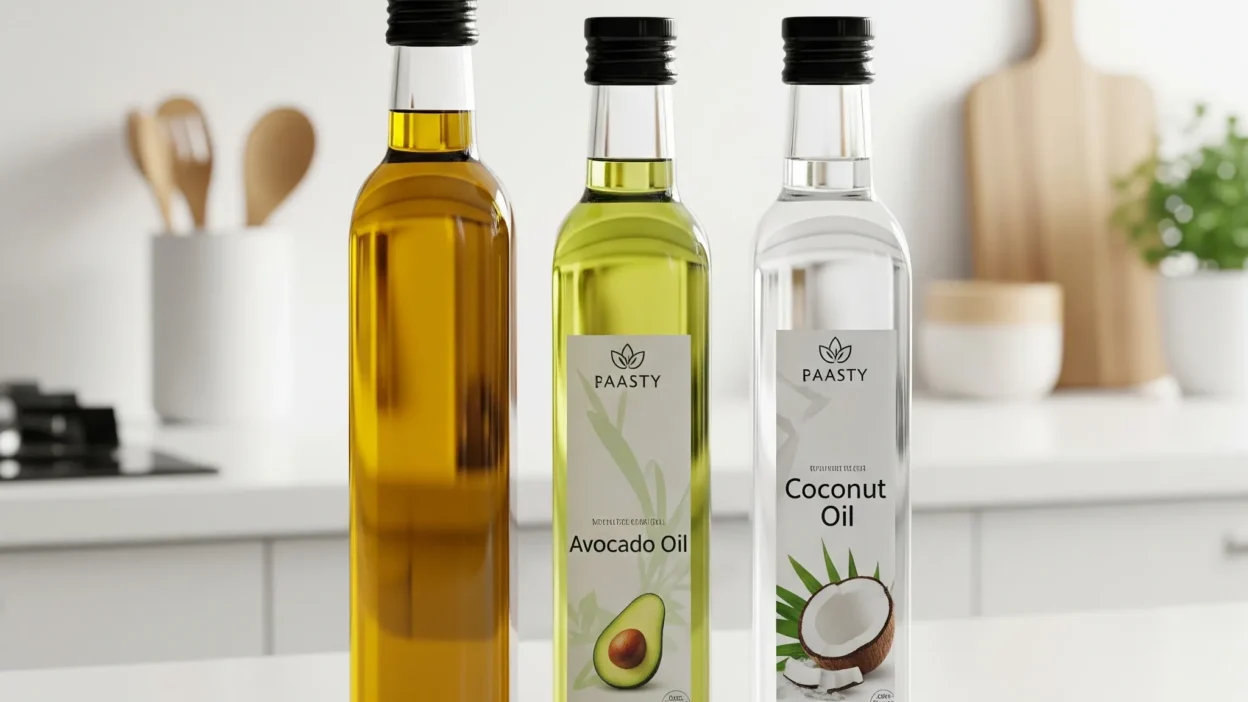Types of Cooking Oils: Which is Healthiest for Your Kitchen?
Ever stood in the cooking oil aisle feeling completely overwhelmed? One bottle boasts “high-heat” cooking, another praises its “heart-healthy” fats, and a third is trending on social media. It’s confusing. Choosing from the many types of healthiest cooking oils can feel like a pop quiz you didn’t study for.
But it doesn’t have to be complicated. The truth is, the “healthiest” oil often depends on what you’re doing with it. This guide will break down the essentials—like smoke point and fat types—to help you confidently choose the best and healthiest cooking oils for your kitchen.
First, What Makes a Cooking Oil “Healthy”?
Before we compare oils, let’s quickly cover two key concepts that matter for your health and your cooking.
- Smoke Point: This is the temperature at which an oil stops shimmering and starts smoking. When an oil is heated past its smoke point, it breaks down, loses nutrients, and can release harmful compounds. Therefore, you should use oils with a high smoke point for high-heat cooking like searing or stir-frying.
- Types of Fat: Cooking oils are fats. The goal is to choose oils rich in monounsaturated and polyunsaturated fats (the “good” fats) and limit those high in saturated fats.
Understanding these two factors is the foundation for choosing the healthiest cooking oils.
Best for Flavor & Low-Heat: Extra Virgin Olive Oil (EVOO)
Extra Virgin Olive Oil is a superstar in the health world, and for good reason. It’s the least processed form of olive oil, meaning it’s packed with heart-healthy monounsaturated fats and powerful antioxidants called polyphenols.
- Best For: Salad dressings, dipping bread, drizzling over finished dishes, and low-to-medium heat sautéing.
- Smoke Point: Relatively low (around 160-190°C or 320-375°F).
- Key Takeaway: Its incredible flavor and health benefits shine brightest when you use it raw or with gentle heat. It’s a must-have among healthy oil choices.

Best for High-Heat Cooking: Avocado Oil
When you need to turn up the heat, avocado oil is your best friend. It has one of the highest smoke points of all plant-based oils, making it incredibly versatile and stable for high-temperature cooking.
- Best For: Searing, roasting, stir-frying, and grilling.
- Smoke Point: Very high (around 270°C or 520°F).
- Key Takeaway: With a neutral flavor that won’t overpower your food and a profile rich in monounsaturated fats, it’s one of the healthiest cooking oils for almost any cooking method.
A Look at Coconut Oil and Other Popular Types
Coconut oil has been both praised and criticized. It’s very high in saturated fat, which has led health organizations like the American Heart Association to advise moderation. However, some of its fats are medium-chain triglycerides (MCTs), which the body metabolizes differently.
- Best For: Baking (where its distinct flavor is desired) or specific South Asian and Thai dishes.
- Smoke Point: Medium-high (around 177°C or 350°F).
- Key Takeaway: Use it sparingly and for its unique flavor rather than as your primary cooking oil.
Other great oils include sesame oil (for flavor in Asian dishes) and flaxseed oil (for dressings, never for heat), further expanding the list of types of cooking oils for a well-stocked pantry.
Making the Right Choice for Your Health
So, which oil should you choose? There isn’t one perfect answer. The best approach is to have two or three quality oils in your kitchen:
- An Extra Virgin Olive Oil for flavor and low-heat uses.
- An Avocado Oil for all your high-heat cooking needs.
By matching the oil to the cooking method, you ensure you’re always using one of the healthiest cooking oils for the job.





